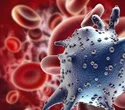Scientists discover how specific protein regions contribute to breast cancer
Researchers at Case Western Reserve University School of Medicine have discovered how specific protein regions contribute to breast cancer.
Their study, published recently in Nature, focuses on what is known as the estrogen receptor, a protein linked in previous research to the development of roughly 70% of all breast tumors.
Just as a machine needs specific controls to function, proteins like the estrogen receptor control how cells grow and behave.
While more research is needed to possibly use their findings to develop new treatments, the discovery offers scientists new tools and ideas far beyond breast cancer, as similar protein regions are involved in many other diseases.
Breast cancer is the most commonly diagnosed cancer worldwide, with over 2.3 million new cases and 670,000 deaths reported in 2022, according to the World Health Organization. Despite the initial effectiveness of drugs that target the estrogen receptor, many patients eventually develop resistance, making therapies ineffective. This new discovery could result in more effective treatments and help explain why that might occur.
"Instead of simply shutting down the estrogen receptor," Yang said, "future drugs might be designed to target these newly discovered switches, offering new ways to control how the protein works."
The research team used small-angle X-ray scattering and nuclear magnetic resonance spectroscopy tools from Advanced Photon Source at Argonne National Laboratory and the National Synchrotron Light Source II to study the proteins switches in extraordinary detail. The collaboration included researchers from Arizona State University and Ohio State University. Additional support came from the National Institutes of Health, the American Cancer Society and the Mary Kay Ash Foundation.
"Yang's work highlights the importance of using cutting-edge technology and teamwork to answer big scientific questions," said Mark Chance, director of the Center for Proteomics and Bioinformatics at the School of Medicine. "These national facilities allow us to make breakthroughs that can drive new cancer treatments."
#ResearchChemistry, #ChemicalInnovation, #Science, #ScienceResearch, #ScientificResearch, #ResearchAndDevelopment, #ChemistryEducation, #ChemistryExperiments, #ChemistryLab, #ChemistryStudents, #ChemistryStudy, #OrganicChemistry, #InorganicChemistry, #PhysicalChemistry, #AnalyticalChemistry, #Biochemistry, #MaterialsChemistry, #TheoreticalChemistry, #AppliedChemistry, #MedicinalChemistry
Visit Our Website : researchchemistry.org
Nomination Link : researchchemistry.org/award-nomination/
Registration Link : researchchemistry.org/award-registration/
Member Link : researchchemistry.org/member-submission/
Contact Us: contact@researchchemistry.org
Social Media Links
Instagram : www.instagram.com/chemistryaward
Twitter : x.com/Chemistryaward
Pinterest : in.pinterest.com/chemistrymails




Comments
Post a Comment